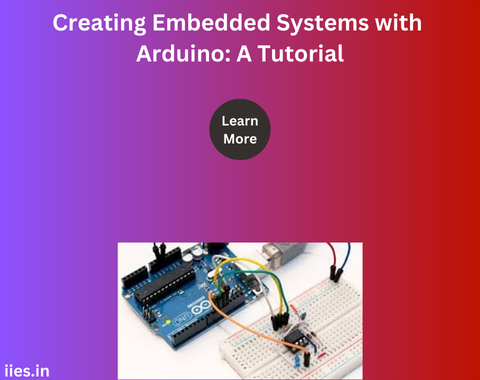
Embedded systems are specialized computing devices designed to perform dedicated functions within a larger system. Unlike general-purpose computers, embedded systems are optimized for specific tasks, making them integral to various applications ranging from home appliances to automotive controls. The Arduino platform, with its open-source hardware and software, has become a popular choice for developing embedded systems, particularly for hobbyists, educators, and engineers. This tutorial provides an overview of the theory behind creating embedded systems using Arduino.
An embedded system typically consists of a microcontroller, memory, input/output (I/O) interfaces, and software. The microcontroller is the core component, responsible for executing the embedded software that controls the system’s functions. Embedded systems are characterized by their real-time operation, meaning they must respond to inputs or changes in the environment within a specified time frame.
Embedded systems can be found in numerous applications, including:
Arduino is an open-source electronics platform based on easy-to-use hardware and software. It was designed to make it easier for people to create interactive projects, with the microcontroller as the heart of the system. Arduino boards come in various models, such as the Arduino Uno, Nano, and Mega, each suited to different levels of complexity and functionality.
The key features of Arduino include:
The process of designing an embedded system with Arduino involves several key steps:
Defining System Requirements: The first step in any embedded system design is to define the system’s requirements. This includes identifying the tasks the system must perform, the inputs it will receive, and the outputs it will generate. For example, a simple embedded system might be designed to monitor temperature and control a fan based on the readings.
Choosing the Appropriate Arduino Board: Depending on the complexity and requirements of the project, you will need to choose an appropriate Arduino board. The Arduino Uno is suitable for most basic projects, while the Arduino Mega is better for projects requiring more I/O pins or memory.
Selecting Sensors and Actuators: The choice of sensors and actuators depends on the inputs and outputs required by the system. For instance, a temperature sensor might be used to monitor temperature, and a relay could be used to control a fan. Arduino supports a wide range of sensors and actuators, making it easy to integrate them into your project.
Designing the Circuit: The next step is to design the circuit that connects the Arduino board with the sensors, actuators, and other components. This involves wiring the components to the appropriate digital or analog pins on the Arduino. Careful attention should be paid to power requirements, as well as ensuring that the circuit is robust and reliable.
Programming the Microcontroller: Once the hardware is set up, the microcontroller needs to be programmed to perform the desired tasks. This is done using the Arduino IDE, which allows you to write, compile, and upload code to the Arduino board. The programming involves reading inputs from sensors, processing the data, and controlling the outputs accordingly.
Testing and Debugging: After programming, the system must be thoroughly tested to ensure it behaves as expected. This involves checking that the inputs are correctly interpreted and that the outputs respond appropriately. Debugging may be necessary if the system does not perform as intended, which could involve checking the code, re-wiring the circuit, or adjusting the system parameters.
Optimization and Finalization: The final step in the design process is to optimize the system for performance, reliability, and efficiency. This might involve refining the code, reducing power consumption, or improving the physical design of the circuit. Once optimized, the system can be deployed in its intended application.
Arduino offers several advantages for creating embedded systems:
Creating embedded systems with Arduino is a rewarding and educational experience that combines hardware design with software programming. Whether you are a beginner looking to learn about embedded systems or an experienced engineer prototyping a new idea, Arduino provides a versatile and accessible platform for your projects. By understanding the theoretical foundations and following a structured design process, you can successfully develop embedded systems that meet your specific needs.
Indian Institute of Embedded Systems – IIES